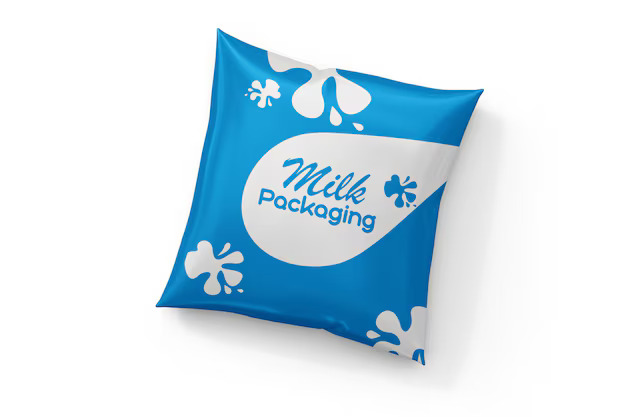How Biodegradable Milk Pouches Help Reduce Plastic Waste
As awareness about plastic pollution grows, the demand for sustainable alternatives in everyday packaging is rapidly rising. One such innovation making waves in the dairy industry is the biodegradable milk pouch. This eco-conscious solution is helping reduce our dependence on traditional plastic while keeping milk fresh and safe for consumption.
With millions of liters of milk consumed daily, conventional packaging methods contribute significantly to landfill waste. The biodegradable milk pouch offers a much-needed change, promoting responsible consumption and a cleaner environment.
The Environmental Impact of Conventional Milk Packaging
Standard milk packaging pouches are typically made from multi-layer plastic films, which are difficult to recycle due to the mixture of materials. These milk packaging pouches often end up in landfills or oceans, where they take hundreds of years to break down. Not only do they contribute to visual pollution, but they also pose a threat to marine life and ecosystems.
The increasing pile-up of non-degradable waste has made it essential to explore alternatives. This is where biodegradable materials offer hope, especially in high-consumption sectors like milk pouch packaging.
What Makes a Milk Pouch Biodegradable?
Unlike traditional plastic, biodegradable milk pouches are made from natural or compostable materials such as corn starch, PLA (polylactic acid), or other plant-based polymers. These materials decompose under specific conditions, turning into water, carbon dioxide, and biomass without leaving harmful residues.
The decomposition process is facilitated by microbial activity in composting environments, ensuring that the milk pouch does not contribute to long-term waste accumulation.
Key Benefits of Using Biodegradable Milk Pouches
- Reduces Plastic Waste: These pouches significantly cut down the volume of plastic entering our landfills and water bodies.
- Environmentally Friendly: Made from renewable sources, they minimize carbon footprint compared to petroleum-based plastics.
- Consumer Appeal: Brands using eco-friendly milk pouch packaging often gain more trust and preference among conscious buyers.
- Safe for Storage: Biodegradable pouches can maintain the freshness and hygiene of milk without compromising safety.
Challenges to Widespread Adoption
Despite their benefits, biodegradable milk pouches face a few limitations. The cost of production is generally higher than standard plastic pouches, making them less accessible for small dairy businesses. Additionally, these pouches require specific conditions for decomposition, which may not be available in all regions.
Another challenge is the lack of consumer awareness. Many people still assume all “green” packaging is compostable or recyclable, which isn’t always true. Proper labeling and public education are crucial for the successful integration of these solutions.
Role of Brands and Manufacturers
Major dairy brands are starting to explore biodegradable options to meet sustainability goals. Some have already begun pilot testing or limited rollouts of eco-friendly milk packaging pouches in select cities. These initiatives show promise in reducing overall plastic usage across the supply chain.
Collaboration with packaging innovators and regulatory support from governments can accelerate this shift. Incentives for companies adopting green packaging can help scale the use of biodegradable milk pouches in the near future.
Consumer Responsibility in the Transition
Consumers play a pivotal role in driving change. By opting for milk brands that use biodegradable packaging, individuals can support a cleaner planet. Additionally, proper disposal practices—such as composting or depositing in designated biodegradable waste bins—are essential to ensure the packaging breaks down as intended.
Education about what makes a pouch truly biodegradable and how to identify one can empower everyday users to make more informed decisions.
Looking Ahead: The Future of Milk Packaging
As technology advances, the cost and efficiency of biodegradable materials are expected to improve. With better infrastructure for composting and waste segregation, biodegradable milk pouches can become the standard in dairy packaging. This shift will not only benefit the environment but also redefine how we package and consume milk on a daily basis.
Ultimately, the adoption of biodegradable milk pouch solutions reflects a growing commitment to sustainability, resource conservation, and climate responsibility.



Leave a Reply
Want to join the discussion?Feel free to contribute!